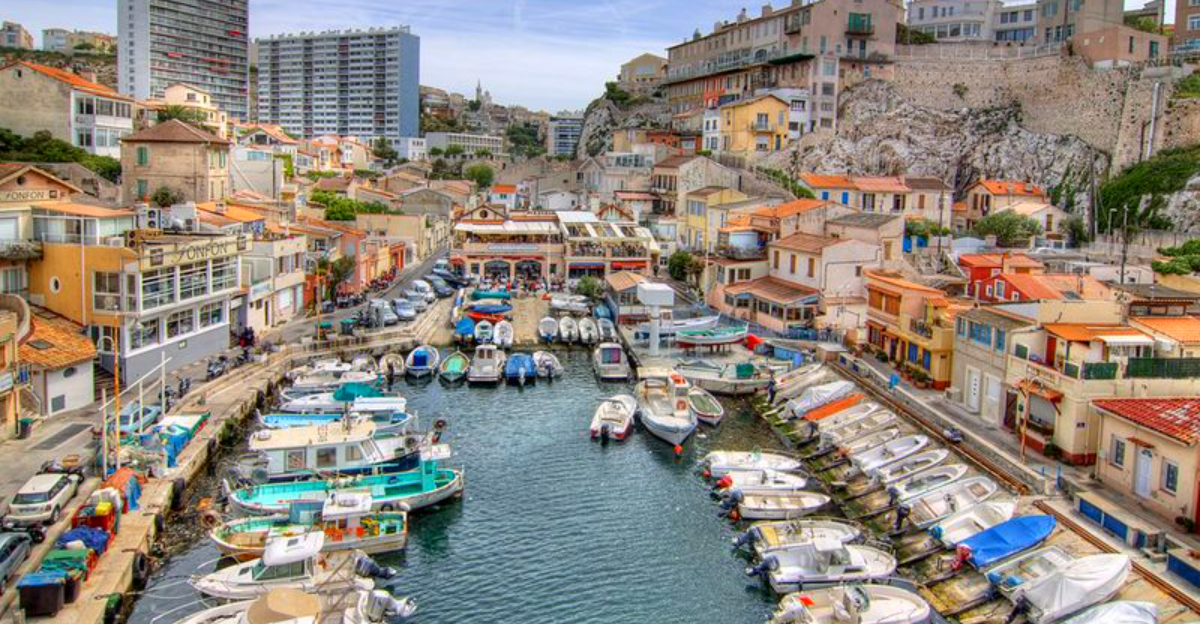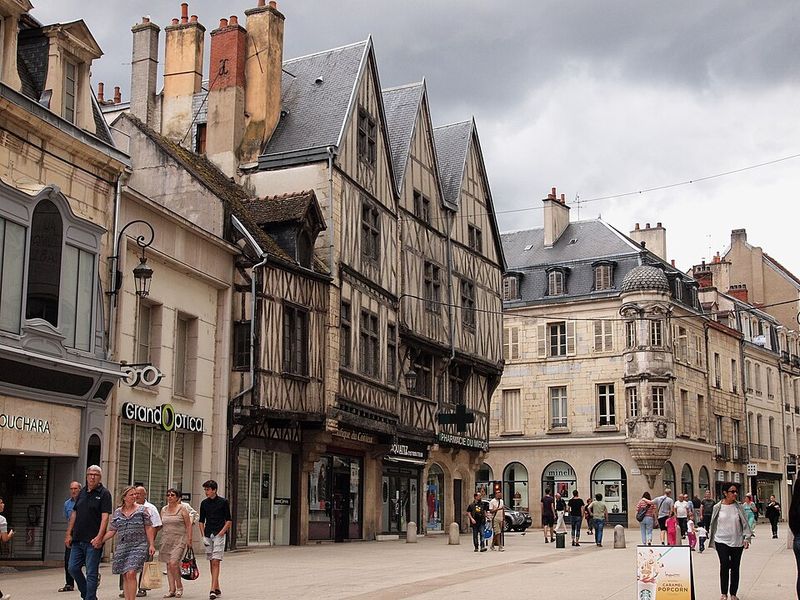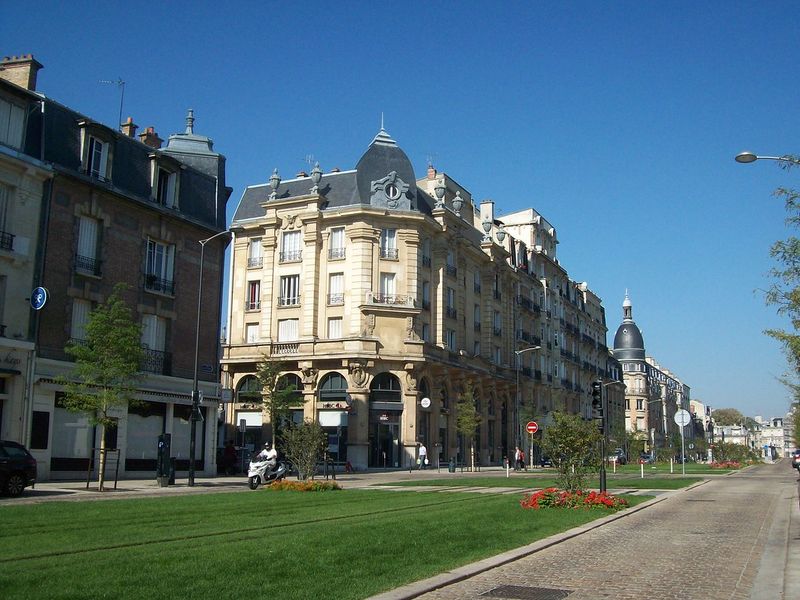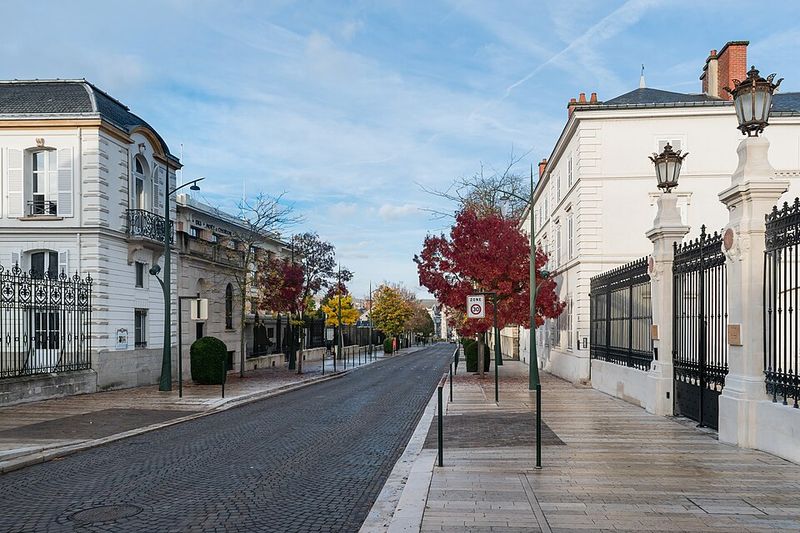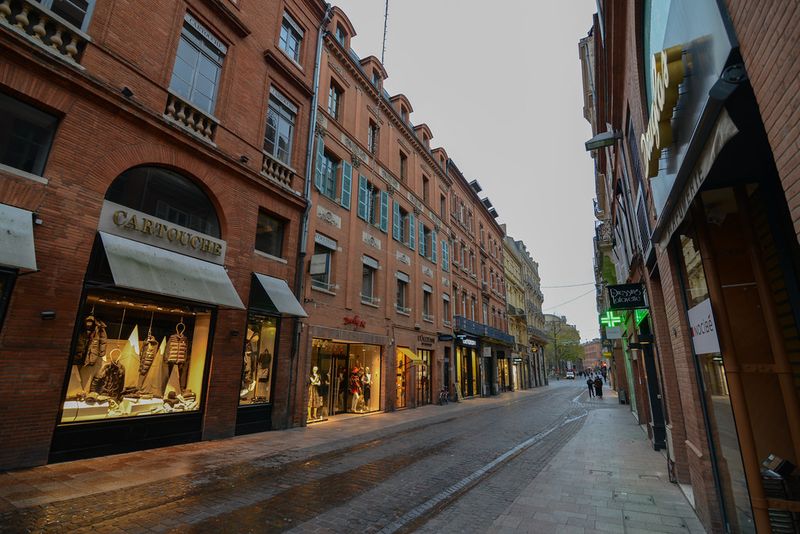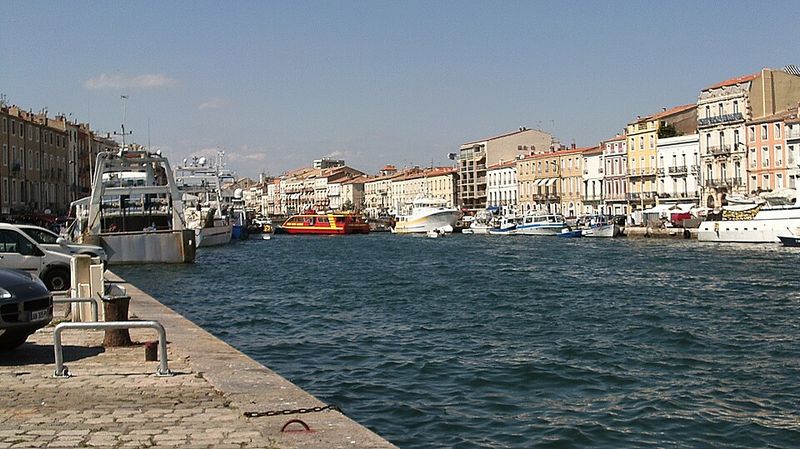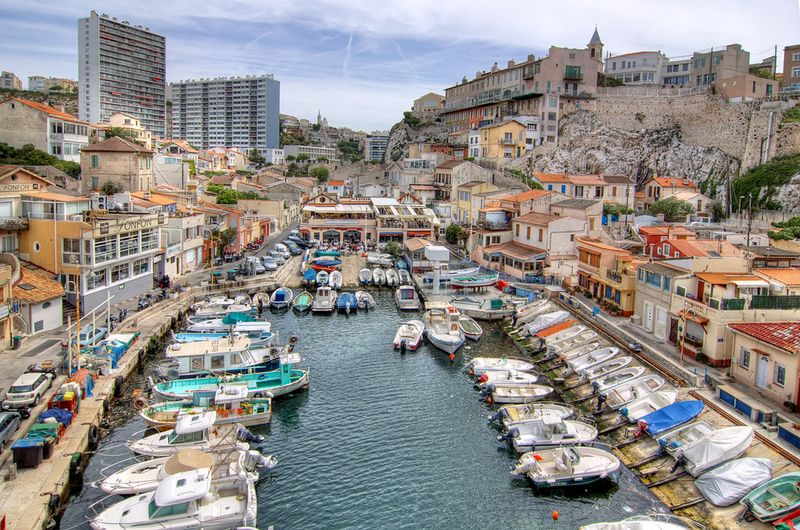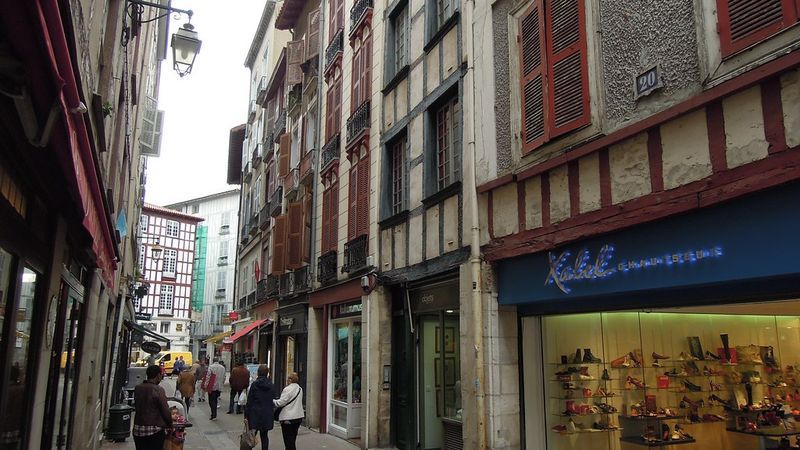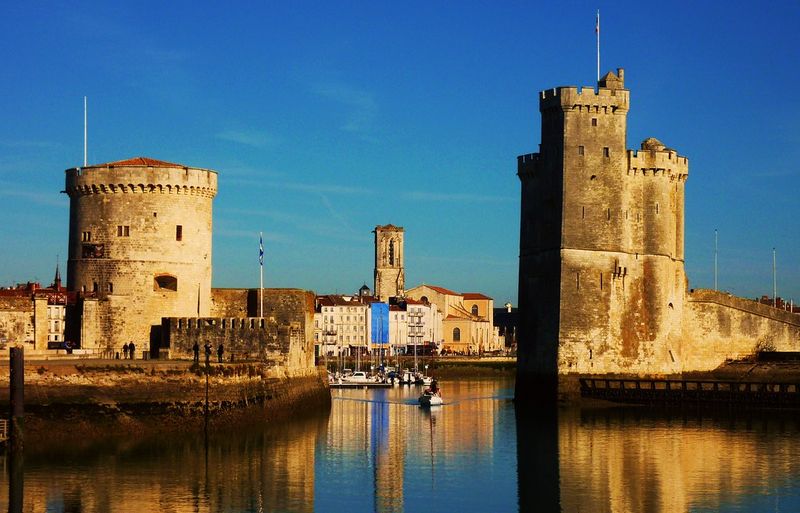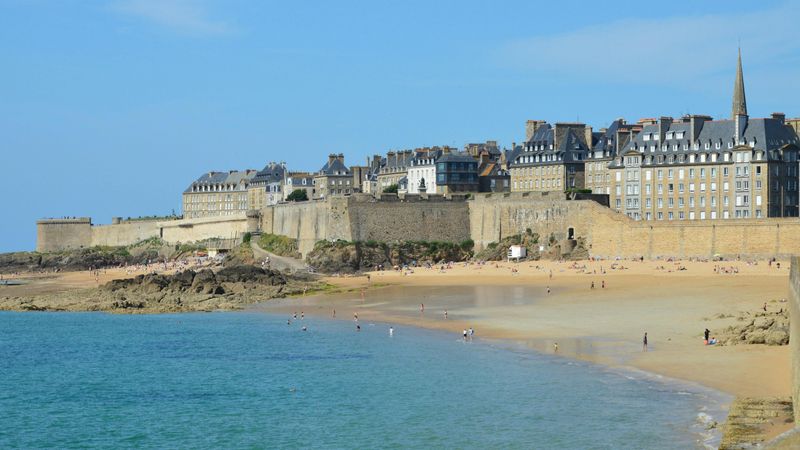France is famous for more than just the Eiffel Tower and beautiful countryside. Across the country, certain towns have become legendary for their incredible food, from bustling markets overflowing with fresh cheese and pastries to historic cellars filled with world-class wine. Whether you crave buttery croissants, fresh oysters, or rich cassoulet, these destinations put flavor first and invite you to eat like a true local.
1. Lyon (Auvergne-Rhône-Alpes)
Lyon earned its nickname as France’s “capital of gastronomy” for good reason. The city pulses with culinary energy, from Michelin-starred restaurants to cozy bouchons serving traditional Lyonnaise fare.
Les Halles de Lyon, named after legendary chef Paul Bocuse, is the heart of it all. This covered market brims with praline brioches that glisten with pink sugar, saucisson brioché (sausage wrapped in buttery bread), and wheels of pungent cheese.
Vendors here take pride in their craft, offering samples and advice. Many stalls close early on Sundays, so plan your visit for a weekday morning when the energy peaks and the selection is widest.
2. Dijon (Burgundy)
Most people think of mustard when they hear Dijon, but this Burgundy city offers so much more. Les Halles de Dijon, a stunning 19th-century market hall inspired by Eiffel’s iron designs, operates multiple days each week and showcases the region’s finest ingredients.
Wander the aisles to discover artisan mustards in flavors you never imagined, local wines, charcuterie, and seasonal vegetables. Locals shop here with canvas bags, chatting with vendors they’ve known for years.
The atmosphere feels authentic and unhurried. Grazing your way through the stalls is the best way to experience Dijon like someone who actually lives there, not just a tourist passing through town.
3. Beaune (Burgundy)
Beaune sits at the wine-soaked heart of the Côte d’Or, where vineyards stretch in every direction. Every Saturday, year-round, the Marché de Beaune fills the covered hall and surrounding squares with the best of Burgundy.
Stalls overflow with epoisses, a creamy, pungent cheese that locals adore, and jambon persillé, a marbled terrine of ham and parsley set in white wine jelly. Seasonal goodies change with the months, from spring asparagus to autumn mushrooms.
The market hums with conversation and the clinking of wine bottles. Visiting Beaune without stopping here would be like touring a vineyard and skipping the tasting room.
4. Reims (Champagne)
Reims offers bubbles with substance, and Taittinger’s recently reopened Saint-Nicaise cellars prove it. After an 18-month refresh, these UNESCO-listed underground caves now host smaller, more intimate tastings that let you truly appreciate the craftsmanship behind each bottle.
The chalk cellars stay cool year-round, creating perfect conditions for aging champagne. Guides share stories of the house’s history while you sip different cuvées, learning to spot the subtle differences between vintages.
Booking ahead is essential, as spots fill quickly. The experience goes beyond just drinking champagne; it connects you to centuries of tradition and the passion that makes Reims the heart of the champagne region.
5. Épernay (Champagne)
Avenue de Champagne in Épernay might be the most elegant street in France. Beneath the grand mansions lie miles of cellars, and Moët & Chandon’s vast underground network is the crown jewel.
Tours here range from quick tastings to deep explorations of the champagne-making process. You’ll walk through cool, dimly lit tunnels lined with millions of bottles, learning how riddling and dosage create those perfect bubbles.
Champagne houses across the region have expanded their visitor offerings in recent years, making it easier than ever to book tours. Épernay rewards those who take time to stroll, sip, and savor the town’s sparkling heritage.
6. Colmar (Alsace)
Colmar looks like it stepped out of a fairy tale, with half-timbered houses leaning over cobblestone lanes. But the real magic happens inside the winstubs, cozy Alsatian taverns where locals gather for hearty food and local wine.
Wistub Brenner is a classic choice that’s been serving for generations. Order the choucroute, a mountain of fermented cabbage piled with sausages and pork, or try pork knuckles braised in Pinot Noir until the meat falls off the bone.
Pair everything with a glass of crisp Riesling or Gewürztraminer. The atmosphere feels warm and welcoming, especially on cold winter evenings when the stove glows and conversation flows freely.
7. Toulouse (Occitanie)
Toulouse pulses with the energy of southwest France, and cassoulet is its culinary soul. This rich stew of white beans, duck confit, and sausage warms you from the inside out.
Marché Victor-Hugo is the city’s culinary engine, a two-story food hall where restaurants upstairs cook what vendors sell downstairs. The connection between market and plate couldn’t be more direct.
Toulouse was even spotlighted as a top city to visit in 2025, and its food scene is a big reason why. Arrive hungry, explore the stalls, then head upstairs for lunch. The freshness and quality speak for themselves in every bite.
8. Sète (Occitanie)
Sète is a working fishing port where seafood comes straight from the Mediterranean to your plate. The town is famous for tielle, a savory octopus pie with a spicy tomato filling that locals eat warm from the bakery.
Oysters from nearby lagoons taste briny and fresh, best enjoyed with a squeeze of lemon and a glass of chilled white wine. Les Halles de Sète operates every morning, with some counters running service into mid-afternoon.
The market buzzes with fishmongers calling out prices and regulars selecting their dinner. Everything smells like the sea, in the best possible way. Sète rewards seafood lovers who appreciate simplicity and freshness above all.
9. Marseille (Provence)
Marseille gave the world bouillabaisse, and eating the authentic version here is a ritual. This isn’t just fish soup; it’s a celebration of the Mediterranean, traditionally made with at least four types of local fish and served in courses.
First comes the saffron-scented broth with crusty bread and rouille, a garlicky red pepper sauce. Then the fish arrives on a separate platter, tender and flaky.
Authentic restaurants follow strict rules and typically require pre-ordering. Use recent guides to choose reputable spots, as quality varies widely. When done right, bouillabaisse is unforgettable, capturing the essence of Marseille’s relationship with the sea in every spoonful.
10. Nice (French Riviera)
Nice claims socca as its own, and rightly so. This chickpea flour crêpe, cooked in a massive pan until the edges crisp and the center stays creamy, is pure comfort food.
Chez Pipo, near the port, has been serving socca since 1923. The recipe hasn’t changed, and neither has the no-frills atmosphere. Locals crowd the tables, tearing off pieces of the hot, peppery pancake with their fingers.
Beyond socca, Nice offers salade niçoise (the real version, with no green beans or potatoes), pissaladière (onion tart), and pan bagnat (tuna sandwich). The food here reflects the city’s Italian influences and Mediterranean spirit perfectly.
11. Bayonne (French Basque Country)
Bayonne ham is the pride of the French Basque Country, cured with sea salt and aged for months until it develops a deep, complex flavor. The town celebrates this heritage every April at the Foire au Jambon, a centuries-old Ham Fair.
During the festival, the streets fill with tastings, competitions, and demonstrations. Producers from surrounding villages bring their best hams, sliced paper-thin and served with bread and local wine.
Even outside festival season, Bayonne’s shops and markets overflow with charcuterie, Basque cheeses, and piment d’Espelette, the region’s signature red pepper. The food here carries the bold, distinctive flavors of the Basque people.
12. Bordeaux (Nouvelle-Aquitaine)
Bordeaux means wine to most people, but the city’s food scene extends far beyond the bottle. Canelés, those caramelized custard cakes with ridged edges, are the city’s signature pastry, best eaten fresh from the oven.
Oysters from nearby Arcachon Bay arrive daily, served on ice with shallot vinegar. In spring, lamprey, an eel-like fish, appears on menus in rich, wine-based sauces.
Les Halles de Bacalan, opposite La Cité du Vin, is a lively gourmet hall with dozens of artisans offering everything from cheese to chocolate. Check hours before visiting, as many vendors wrap up early on Sundays. The quality and variety make it worth planning your day around.
13. La Rochelle (Atlantic Coast)
Imagine biting into the freshest oysters you have ever tasted while watching fishing boats bob gently in a historic harbor. La Rochelle makes this dream a reality every single day. This charming coastal town specializes in seafood that arrives at your plate within hours of being caught.
The local markets overflow with clams, mussels, and prawns that glisten under the morning sun. Restaurants here understand that simple preparation lets the ocean flavors shine through. Many chefs grill fish with just butter, garlic, and herbs.
Walking through the old port area, you will notice how deeply the community connects with the sea and its bounty.
14. Saint-Malo (Brittany)
Surrounded by massive stone walls that have protected it for centuries, Saint-Malo offers a culinary experience rooted in Breton tradition. Buckwheat crepes called galettes are the star attraction here, filled with everything from ham and cheese to scallops and mushrooms. Locals pair these savory treats with crisp apple cider that perfectly balances the rich fillings.
The town also celebrates its pirate heritage with hearty seafood stews that warm you from the inside out. Fishermen still bring in catches daily, ensuring restaurants serve the absolute freshest ingredients.
Wandering the cobblestone streets between meals becomes part of the delicious adventure itself.
15. Sarlat-la-Canéda (Dordogne/Périgord)
Step into a medieval fairytale where food has remained virtually unchanged for hundreds of years. Sarlat-la-Canéda sits in the heart of truffle and foie gras country, where these luxury ingredients appear on nearly every menu. The Saturday market transforms the entire town into a food celebration that attracts visitors from across Europe.
Duck prepared in countless ways dominates local cuisine, from confit to magret steaks cooked to perfection. Walnut trees dot the surrounding countryside, and their nuts flavor everything from salads to cakes.
Eating here feels like traveling back in time to experience authentic French country cooking at its absolute finest.
